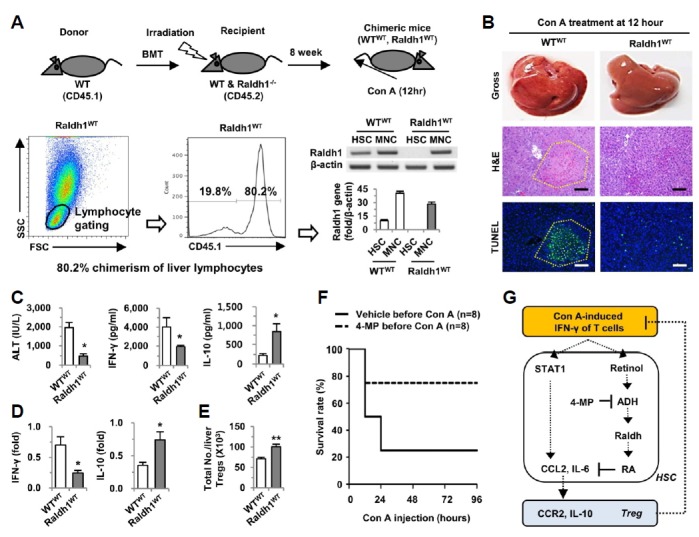Fig. 5.

Blocking of the retinol metabolic pathway ameliorates Con A-mediated liver injury, subsequently augmenting the survival rate. (A) Chimeric mice were generated by transplantation of WT bone marrow to WT mice (WTWT) and Raldh1-deficient (Raldh1−/−) mice (Raldh1WT). Eight weeks after bone marrow transplantation, isolated liver MNCs and HSCs were analyzed for chimerism with flow cytometry or RT- and real-time PCR. (B) Eight weeks after bone marrow transplantation, mice (n = 5/group) were injected with Con A (12 mg·kg−1) for 12 h. Gross findings of whole livers and liver sections stained with H&E and TUNEL. Yellow dotted lines indicate damaged areas. (C) Serum levels of ALT, IFN-γ and IL-10 were measured. (D) Real-time PCR analyses were performed with isolated liver MNCs. (E) Total numbers of hepatic Tregs from liver MNCs of mice were analyzed by flow cytometry. (F) Ninety-six hour survival rates were evaluated in mice (n = 8/group) treated with a lethal dose of Con A (30 mg·kg−1). (G) Schematic diagram of the beneficial effects of 4-MP in Con A-mediated acute hepatitis in mice. Data are representative of three independent experiments. *P < 0.05; **P < 0.01 compared with the corresponding control. Scale bar, 100 μm.
